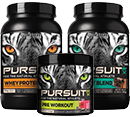
In Pursuit Of Size: The 10 Most Underrated Muscle-Building Tips
Supercharge anabolism with these key tips to turn you into a muscle-building machine.
A recipe is a step-by-step guide in the kitchen to making a great meal. Maybe not always Martha-Stewart great, but certainly tasty and filling.
Unfortunately, there are no surefire recipes for success in the gym. Sure, there are workouts, which look like they could be recipes, but there are so many variables you can't control—like your own genetics and your metabolism—and the fact that you may have other responsibilities, like work or family, pulling on your time. And while you can prepare a delicious meal in about half an hour, with the gym it literally takes months or years to procure meaningful results.
If you're hungry for some seasoned mass-building tips, grab a fork, because we're going to serve you 10 meaty ones that we consider to be the most underrated. Some are geared toward beginners; others are more advanced. Keep them in your cupboard like you would salt and pepper, because you'll want to frequently rely on these weight-training basics for faster results.
1Do The Right Exercise First In Your Workout
Many trainees start off their workouts with exercises they should be doing last! When looking for the best exercise with which to start your workout, steer toward multijoint movements. You can lift the most weight early in your workouts when your energy levels are high. They're called multijoint because several sets of joints are working, recruiting additional muscle groups. On the bench press, for example, movement is taking place at the elbows and shoulders, recruiting the triceps and front delts in addition to the pecs.
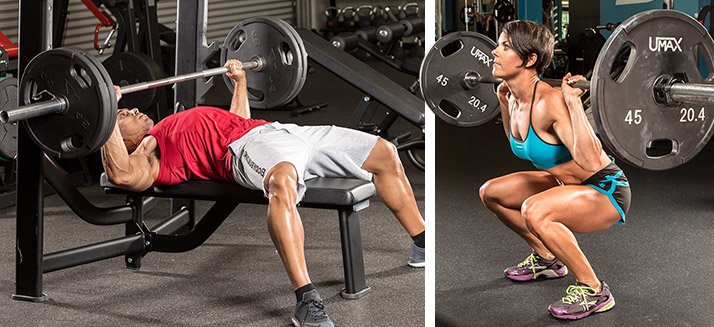
Squats, bent-over rows, overhead presses, and bench presses are the best muscle builders for the legs, back, shoulders, and chest, respectively. Each of those exercises should be the foundation exercise for its respective body-part routine. Add on other multijoint exercises from different angles to fully work a target muscle.
What are the worst exercises to start your routine with? Single-joint exercises in which you can't use much weight, like concentration curls for biceps, reverse-grip press-downs for triceps, and cable cross-overs for chest.
2Use The Correct Weight
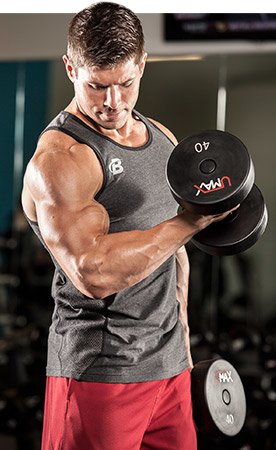
Beginners, especially, are confused by how much weight they should put on a bar. After all, you can curl a 75-pound weight 8 times or a 35-pound bar 65 times, and they're both hard by the last few reps. So which one should you do?
The answer to this question depends on your goals. Warm-up sets aside, when your goal is to focus on strength, your heavy sets should be done for fewer than 6 reps. When your goal is building muscle, choose a weight that leads to muscle failure between 8-12 reps. And for emphasizing muscle endurance, go with a weight in which you can do more than 15 reps.
Because of the high intensity—the amount of weight you use relative to what your max is for a given exercise—the first two approaches target the fast-twitch muscle fibers the best, and these are the fibers most prone to growth.
3Opt For Standing Movements
You may have never given much thought to the idea that some exercises can be done seated or standing. Dumbbell curls, shoulder presses, bent-over lateral raises, and even cable crossovers come quickly to mind. But if you're searching for growth, opt for standing movements. Besides requiring your core to work harder, you'll also be able to go a little heavier, do more reps with a given weight, or both. That's because when you're standing, you can more easily generate a little body English through your knees and hips. That's especially useful as you fatigue; you can push a little longer when you can introduce a slight cheating motion to help get you past a sticking point.
4Don't Take Every Set To 10 Reps
While 10 reps falls into the sweet spot for hypertrophy (which is 8-12 reps), the problem here is that it's all too easy to fall into a comfort zone over time. Choose a weight, do 10 reps, and repeat, over and over. Well, do that for too long, and you're putting in lots of work but not making any significant gains. Once you can achieve 10 reps with a given weight, an alarm should ring in your head to increase the weight. This is especially true with multijoint movements. Sure, you may be able to complete only 7-8 reps with that new weight, but the idea here is to progressively overload the muscles, which doesn't happen if you're always doing sets of 10. Challenge yourself in the gym and never become too comfortable.
5Vary The Rep Ranges In Your Workout
There are a number of approaches to organizing your working sets on a given exercise. While we've addressed the dangers of falling into a comfort zone by always doing 3 sets of 10, there are several options you can consider, some of which are better for building muscle size and others for focusing on strength. They're typically grouped under what's called pyramid training; the pyramid is a graph that correlates weight lifted and the number of reps you can do over the course of several sets. With pyramids, you step up the weight a bit on successive sets (for fewer reps). With reverse pyramids you do the opposite; you reduce the amount of weight on each of your successive working sets.
Understanding and following the basics of pyramid training, rather than taking a random approach to your weights, can help you achieve your goals in the gym.
| Sample Bench Press Pyramid | ||
| Set | Weight | Reps |
| 1 | 135 | 15 |
| 2 | 185 | 12 |
| 3 | 205 | 10 |
| 4 | 225 | 8 |
| 5 | 245 | 6 |
| 6 | 265 | 4 |
6
Get A Spot On Your Heaviest Sets
Have you ever asked someone to spot you for a heavy set of 6 reps, only to find you could have done 8? Whether it's squatting or benching, something remarkable happens when you know there's someone watching you perform a set: You push harder. Whether it's because you know there's a watchful eye that allows you to safely bail out if need be, or you simply perform better when you know you're being watched, solo trainers can take advantage of this phenomenon by asking for a spot on the heaviest set. Of course, it goes without saying you want an experienced spotter, not someone who is shouting, "It's all you!" as you collapse under the bar.
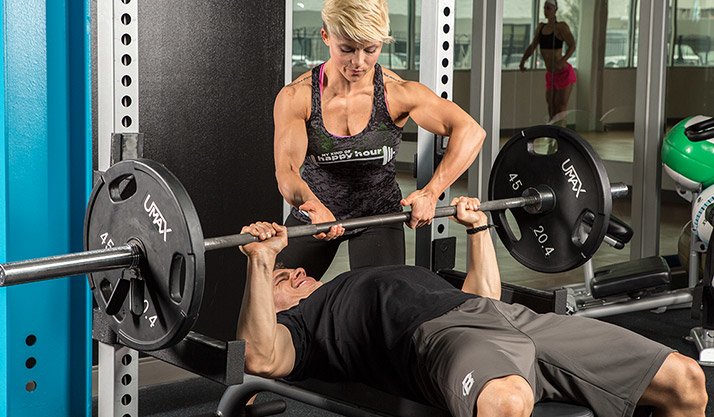
Limit Your Weight Workouts To 75 Minutes Tops
You've heard the discussion about quantity versus quality; this is the weight-room version of that argument. Let's say you're following the bodybuilding guidelines regarding high intensity. You're keeping rest periods constrained, training to failure with occasional advanced intensity techniques, starting with multijoint exercises, and using high volume. Great. If you're doing all those things right, you shouldn't be able to go past 75 minutes with fuel left in the tank.
If you are pushing two-hour workouts, consider increasing the intensity of every set you're doing. A shorter, high-intensity workout will deliver better results—and get you out of the gym faster—than a low-intensity one that's just long. If you can't stimulate your biceps fibers in 30 minutes, the two-hour version isn't gonna be the fix you're looking for. In fact, it's likely to do just the opposite.
8Make a Very Small Change On Every Exercise
Introducing large-scale changes into your training shouldn't be done all that often. But you can often make subtle adjustments in your routine by switching just one element of each exercise you're doing. It's a great way to hit a target muscle in a slightly different manner, which is especially useful if you've reached a training plateau.
- Using a wide grip on a lat bar on the seated row instead of a close one works the upper lats better.
- Taking a wide grip on your barbell curls rather than a shoulder-width one places more emphasis on the long head.
- Doing your close-grip benches on a slightly inclined bench brings in the triceps long head a bit more and works the inner pecs just a bit higher up.
- Taking a higher foot placement on the leg press shifts some of the emphasis from the quads to the glutes and hams.
If you make just one small change to each exercise in your workout on a given day, you'll stimulate the target muscles in new ways and find your workout is more interesting as well.
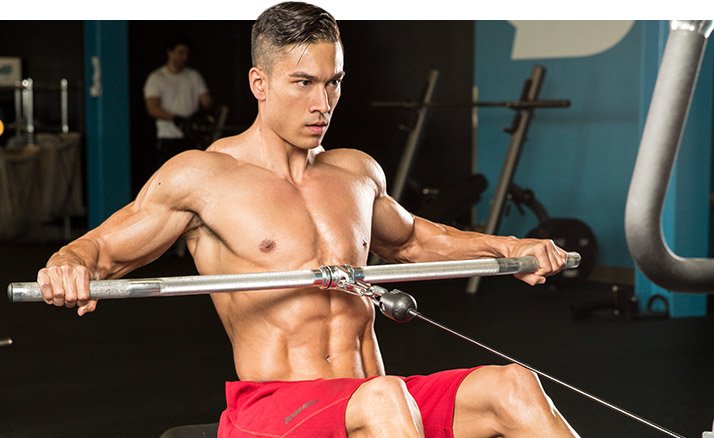
Don't Stop Until You Have To
There's a difference between doing a set to the point where it's simply uncomfortable, and taking it to absolute failure. Those last few reps are the ones that cause the most microdamage to your muscle fibers. Use the same approach when finishing up your routine: push yourself until you just can't go anymore.
On your final exercise for a body part, combine a single-joint exercise with an intensity technique that'll flush your muscle. Dropsets are an easy way to fatigue the muscle; you don't just stop at failure—you immediately reduce the weight by about 25 percent and continue on to a second point of muscle failure.
At the end of your workout, when you're already highly fatigued, the name of the game is to deliver a monster muscle pump. Driving fluids into the muscle temporarily increases its size, pressing against the fascia that encapsulates the muscle. High-intensity finishers also encourage the natural release of muscle-building hormones. They're typically done for slightly higher reps.
Finishing your workout with such pumping sets temporarily increases pain levels—as you likely know—and feels like you've got nothing left in the tank. That's when you know you're done with your workout.
10Train Hard, Rest, And Repeat
In your zeal to grow, you may be inclined to train more often, thinking more is better. However, this can actually undermine your efforts, because muscle growth is only stimulated in the gym; the actual growth processes take place in the presence of good nutrition and sufficient rest.
In fact, short-changing your sleep can suppress levels of testosterone, the hormone responsible for muscle building. As for fuel, if you're eating crap, don't expect it'll magically turn to muscle just because you're training hard. Consume clean, high-protein foods every day, and supplement wisely to ensure you optimize the conditions that create anabolism. Don't waste your efforts in the gym with a sloppy diet.



